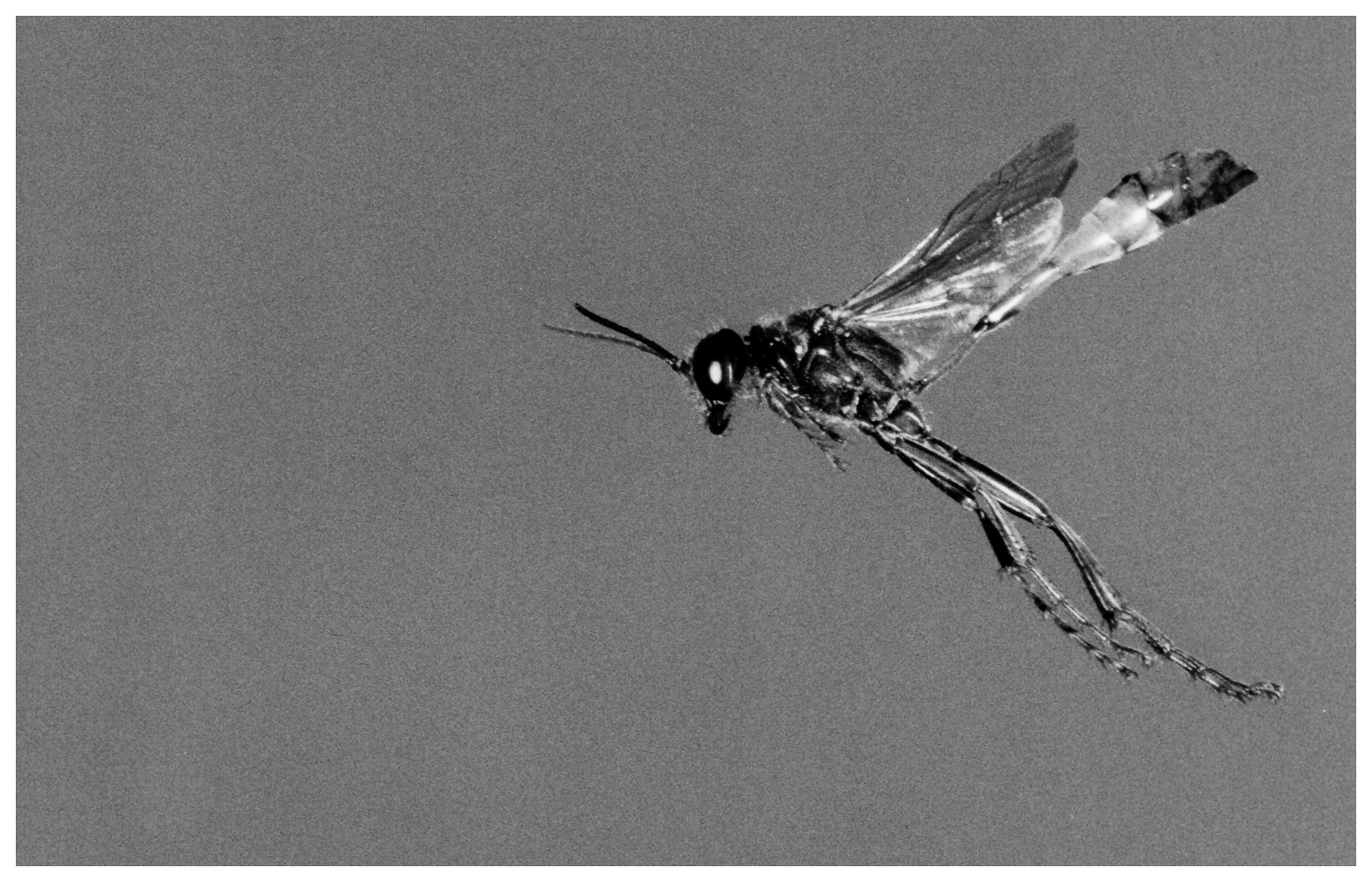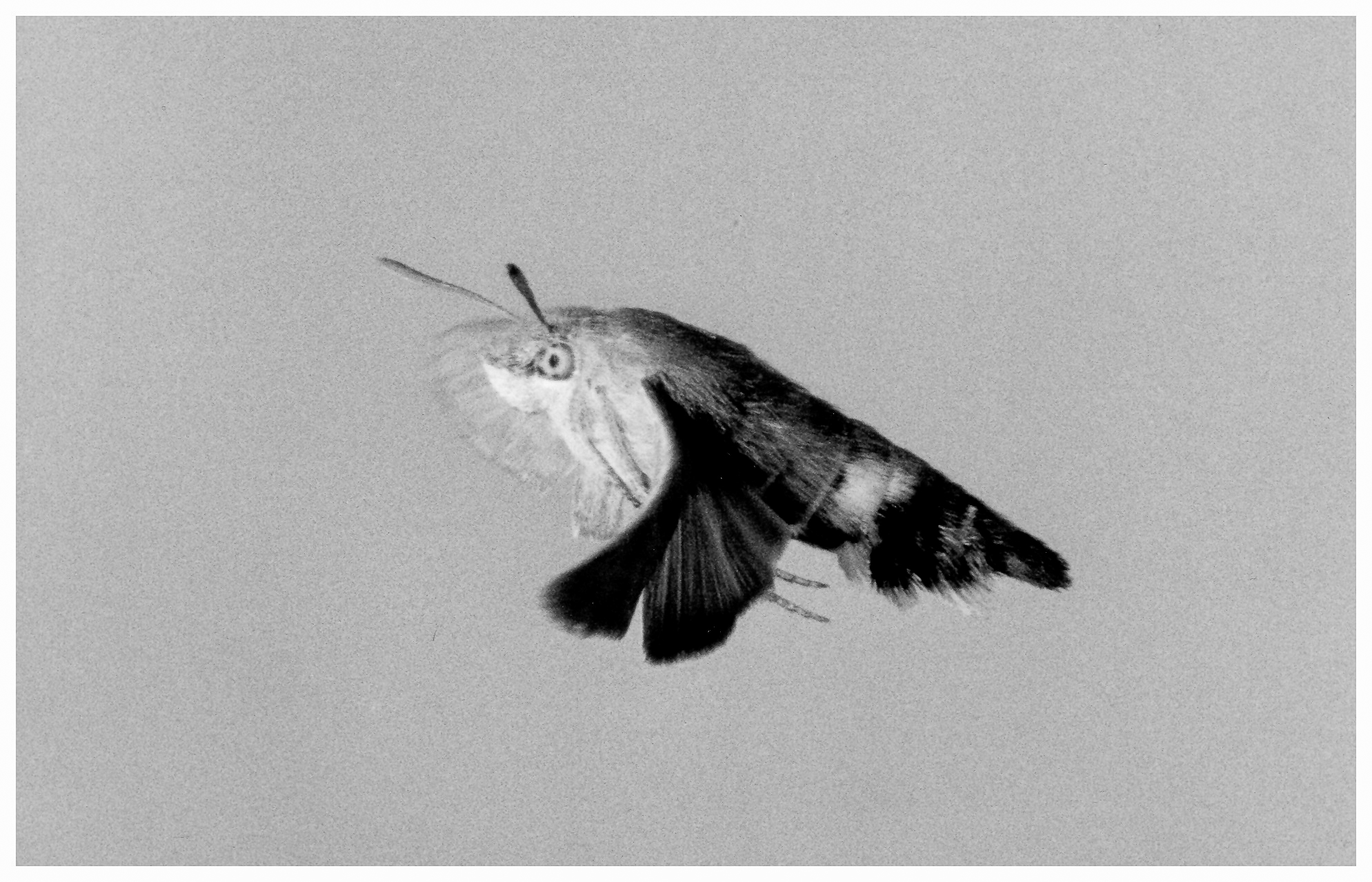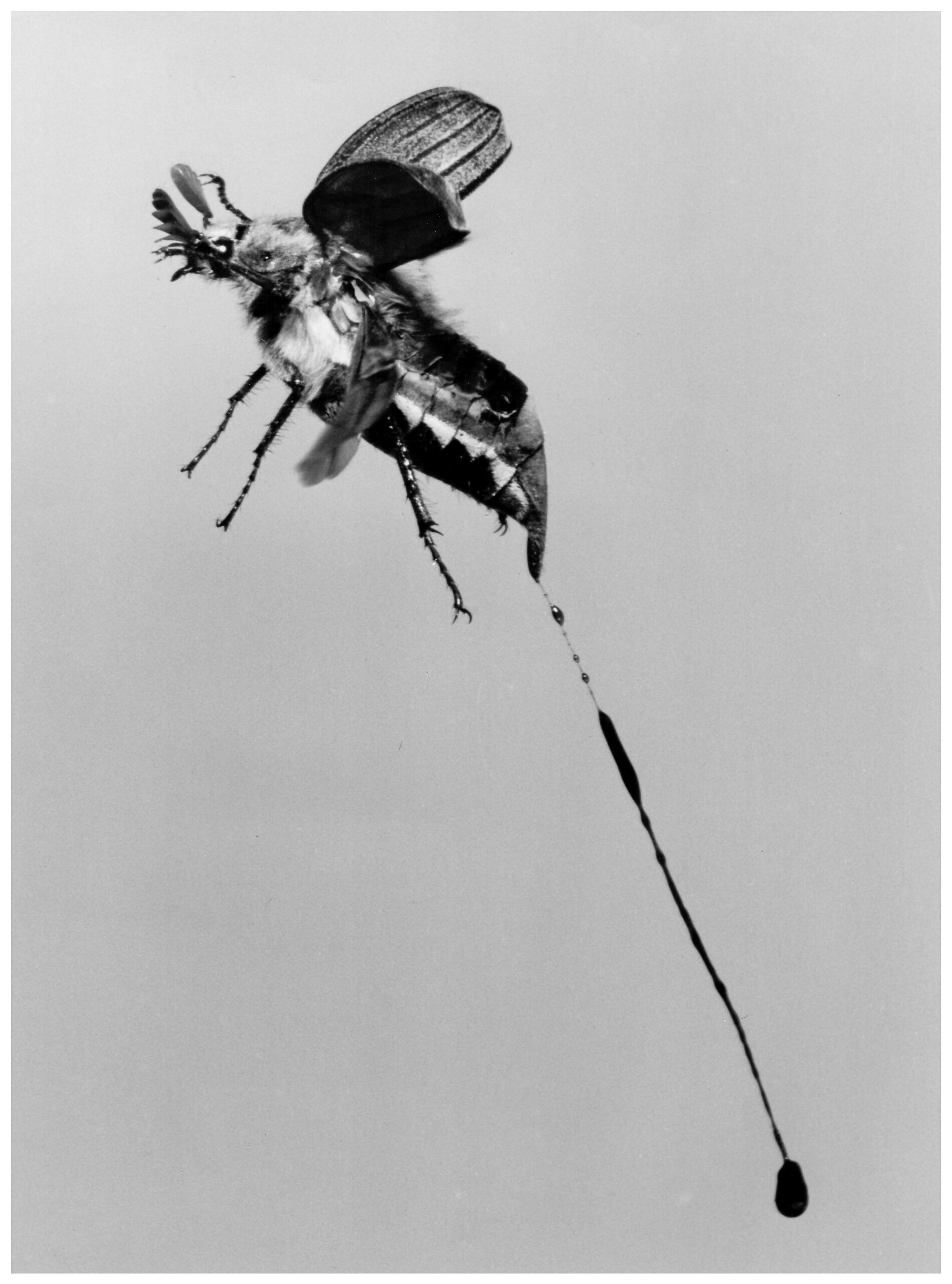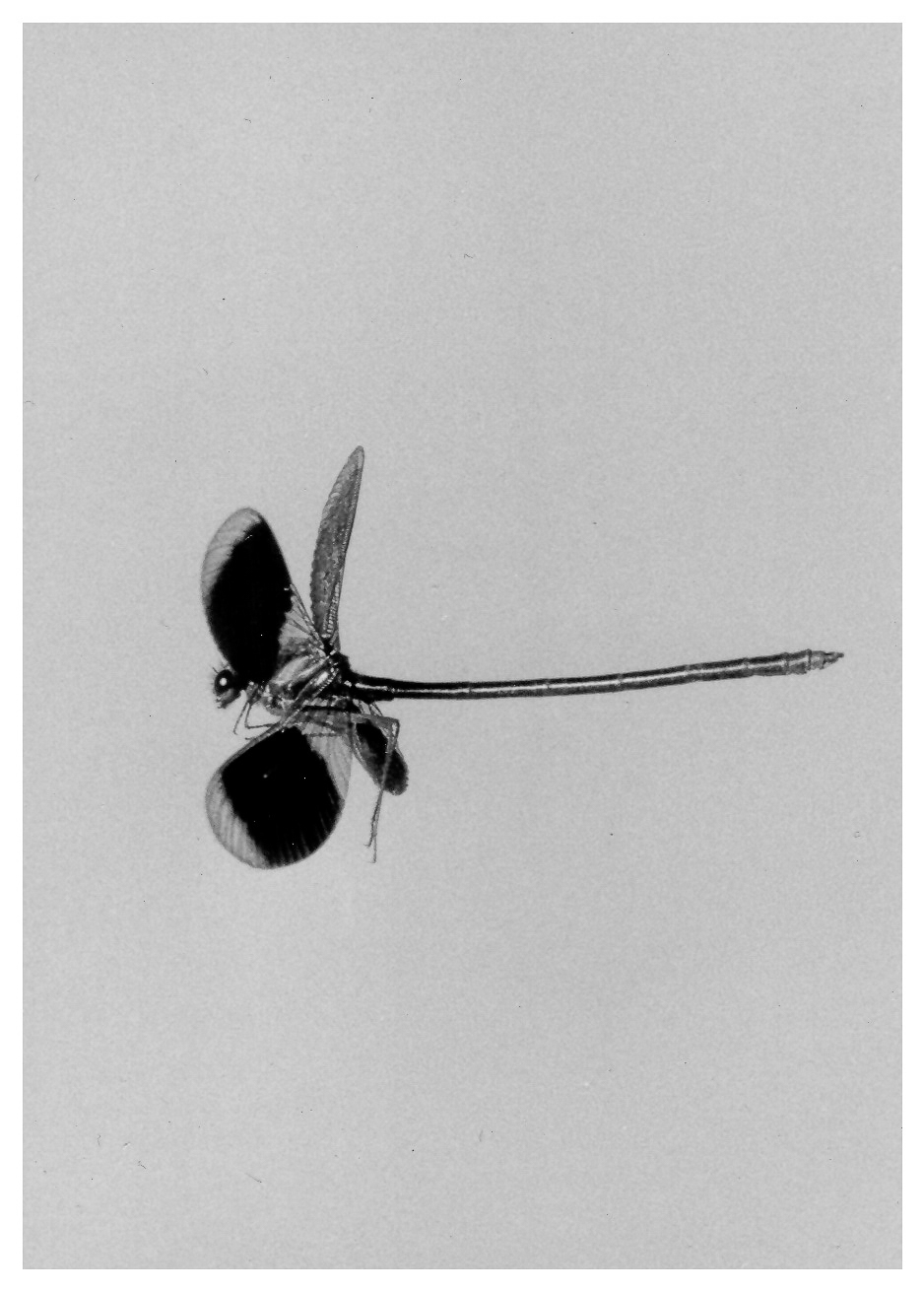In 1985, while I was a field assistant for an entomologist in Costa Rica, I met an amateur entomologist and photographer from Switzerland, Werner Töpfl. Somehow, we got on the topic of high speed photography, and he told me that he had previously taken photos of insects in flight. When we parted ways, he said he would send me some of his photos. Months later, when I was back in the U.S., a large envelope arrived from Switzerland. Inside, in addition to a letter from Werner, were a number of black and white prints, and also the cover of a magazine featuring his photos. This publication still exists. The English translation of the title is “Natural Sciences Review” and here’s a Wikipedia article about it.
In 2022, thirty-seven years later, I was cleaning out my basement and found the envelope with all of its original contents. I wondered if I could contact Werner after all these years. I searched for his name on the Internet and came up with just one hit, which didn’t provide any email address, but it did show a physical address that was the same as the return address on the envelope! I sent Werner a letter, along with a copy of his 1986 letter. A couple of months later, Werner wrote back to me with email. He was 92 years old, and studying the nesting behavior of solitary bees and wasps!
With Werner’s permission, I present here his photos from the early/mid 1960s. It’s possible that he was the first photographer to capture clear images of insects in flight. I don’t know anything about his setup, other than that he mentioned that a 3000 volt flash was used.
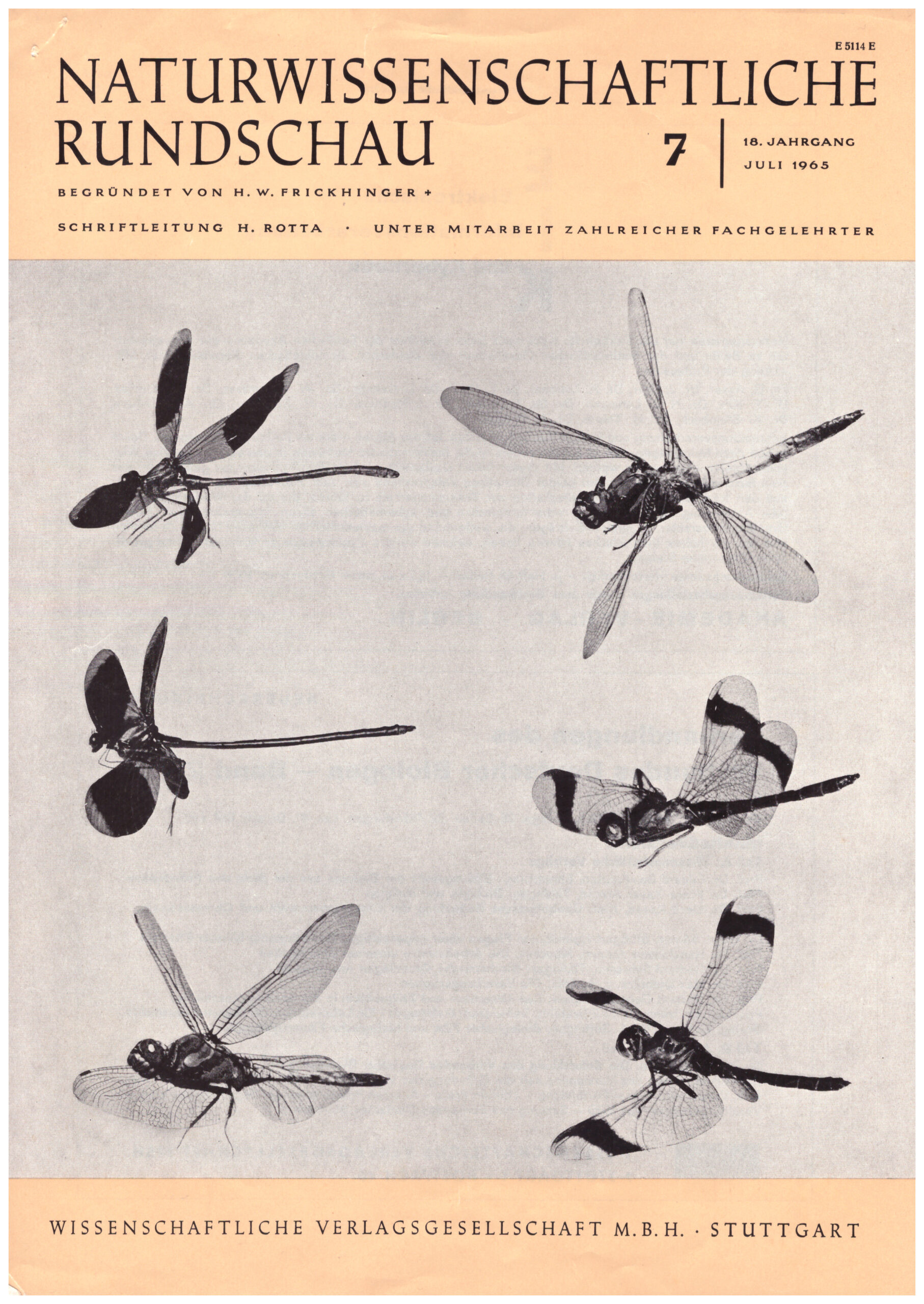
Phanias harfodi Mature female
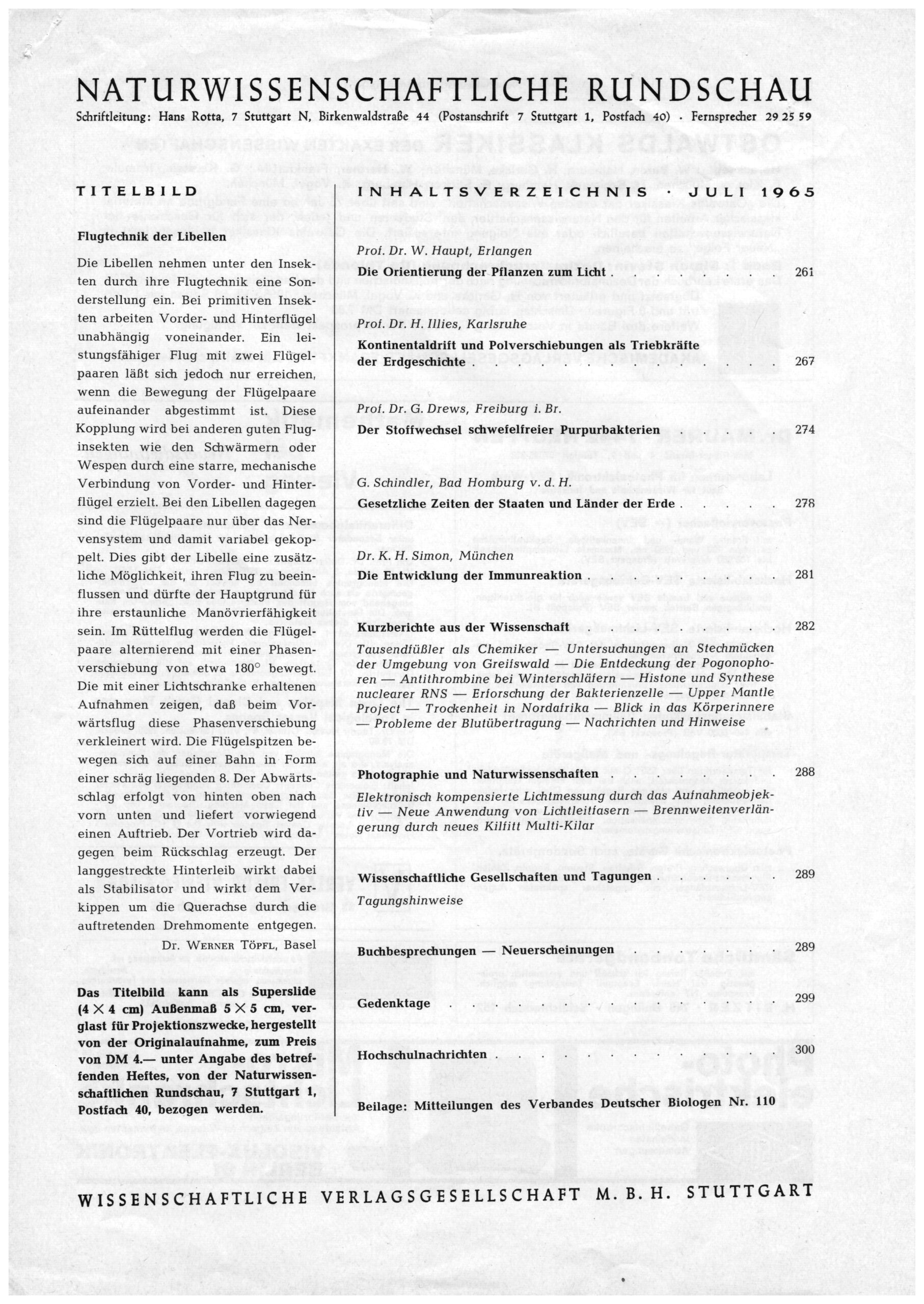
First page of the July, 1965 Natural Science Review. Here is the Google translation of Werner’s text into English, which describes basic mechanics of dragonfly flight.
COVER PHOTO
Flight technique of dragonflies
The dragonflies take among the insect occupies a special position due to their flight technique . In primitive insects, the forewings and hindwings work independently. However, efficient flight with two pairs of wings can only be achieved if the movement of the pairs of wings is coordinated. This coupling will be good at other flight insects like the swarmers or wasps are achieved by a rigid, mechanical connection between the fore and hind wings. In dragonflies, on the other hand, the pairs of wings are only variably coupled via the nervous system. This gives the dragonfly an additional opportunity to influence its flight and may be the main reason for its amazing maneuverability. In shaking flight, the wing pairs are moved alternately with a phase shift of about 180°.
Photographs obtained with a photocell show that this phase shift is reduced during forward flight. The wingtips move on a track in the form of a slanted figure of 8. The downstroke is from the back up to the front down and predominantly delivers
a boost. The propulsion is there generated against during recoil The elongated abdomen acts as a stabilizer and counteracts tilting about the transverse axis by the torques that occur .
